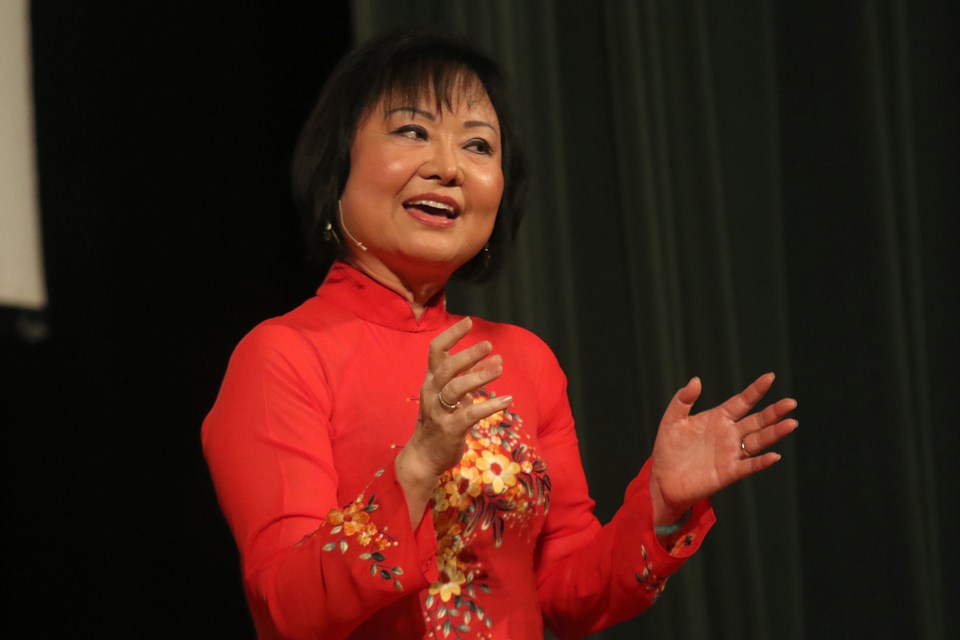THUNDER BAY -- Kim Phuc says she didn’t know fear until she was nine years old.
A happy-go-lucky child growing up in war-torn South Vietnam, she loved to laugh with her friends, ride her bicycle and feast on noodles at her mother’s restaurant.
But on June 8, 1972 her world was ripped apart.
On that day her village, Trang Bang, was attacked from above, napalm bombs exploding all around her.
As international journalists watched a short distance away, a naked and screaming youngster emerged running from the carnage, her skin seared from the effects of the burning napalm, whose temperature reached 1,200 C.
Associated Press photographer Nick Ut captured her agony for all time, the Pulitzer Prize-winning picture finding its way to the front page of newspapers around the world.
“It changed the way people saw the Vietnam War,” said Phuc on Friday night, speaking to a near-capacity Selkirk Auditorium, brought to Thunder Bay by Nu Vision Ministry.
“It changed my life forever.”
Ut actually saved her life, picking her up and carrying her away to seek medical help. She was left for dead in the morgue.
Three days later her parents found her and took her to a burn clinic in Saigon, where she began a long road to recovery that involved years of surgeries.
“I spent 14 months in the hospital. I had 17 operations. I almost died many times. But I didn’t die,” she said.
“Inside of me was a little girl who was determined to live.”
She recovered, grew up and eventually was accepted into medical school. That’s when the communist Vietnamese government rediscovered Phuc and decided to use her as a propaganda tool.
“They decided I should be a war symbol for the state,” Phuc said. “They tried to control me and eventually they cut short my studies.”
Not wanting her to escape their grasp, the government reluctantly allowed her to study abroad in Cuba, where she met her future husband Bui Huy Toan, also a student in Havana.
Realizing she no longer wanted to live under a communist regime, a terrified Phuc convinced her new husband to defect to Canada on their way home from a honeymoon in Moscow during a fuel stopover in Gander, Nfld.
Allowed to stay in Canada, Phuc said at the time, in 1992, she wanted to distance herself as far as she could from the picture that had made her famous around the world.
“It seemed to me that picture did not want to let me go,” she said. “For many years, that picture had controlled me. Then a weird thing happened. I realized if I could not escape the picture, I could work with it for peace. Now I work with my picture for good and it is my choice.”
The mother of two, who turned to Christianity to light her path, now heads Kim Foundation International, a charitable organization that’s helped build a medical centre in Ongutoi, Uganda.
Having long since forgiven her attackers, Phuc said she hopes her pain and suffering can make a difference in the world today.
“Now, when you see the little girl running up the road in a firebomb that would change her life forever, try not to see her as a symbol of war crying out in pain and fear,” she said. “Try to see her as a person who has become a symbol of peace.”
Phuc will also be speaking on Saturday morning at a breakfast at the Airlane Hotel at 9 a.m. Tickets are $25.
